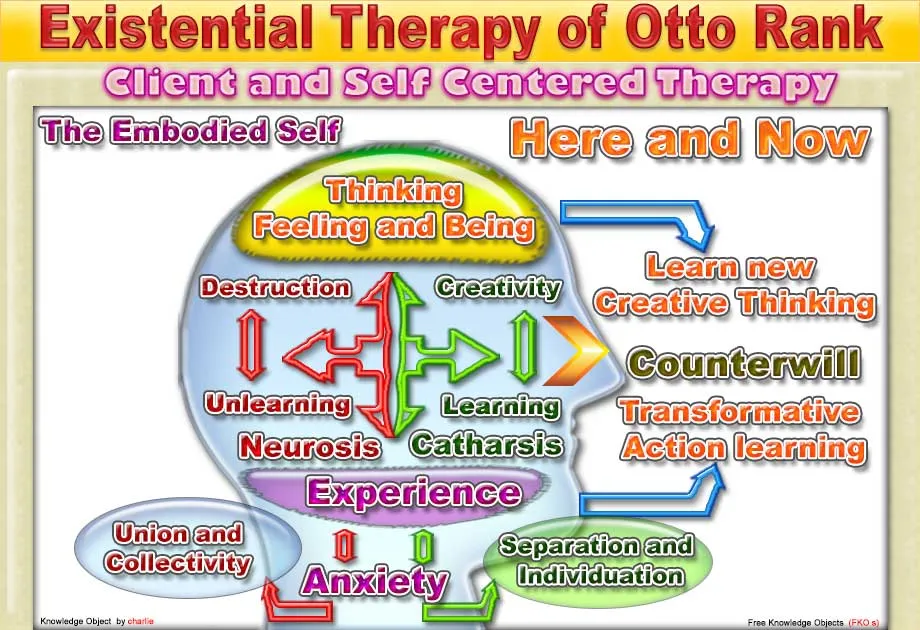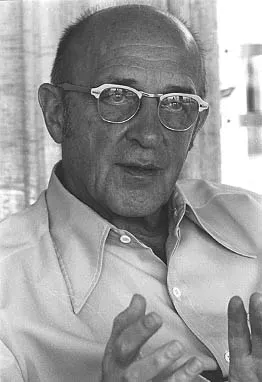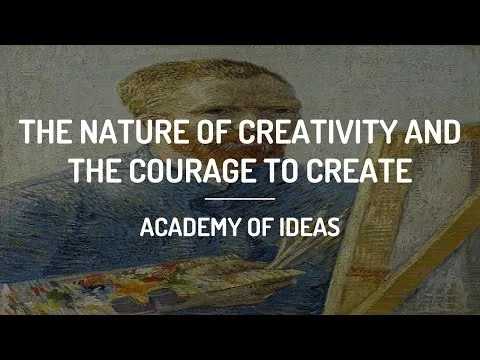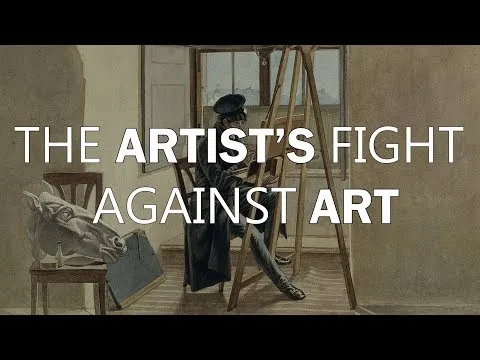The Dialectics of Liberation: Anarchism, Existentialism, and Decentralism
Humanism and Existentialism: Part 2 - Humanistic Psychologists - Otto Rank - Art and Psychoanalysis
"Our corporeal self is the artist of Existence" - charlie777pt
1 - Introduction
“Experience, and still more the whole attitude towards life, grow out of the struggle to create and so reduces the problem of experience to the problem of creativity." - Otto Rank
We can use art and speech as the only tools for human catharsis in a non-shamanistic society, with an institutional system with the medical and legal perspective of the authorized wizards of the mental health apparatus.
There is no place for our personal will and feelings in the psychiatric institutional role, that has the objective of aligning people's behaviors with the demands of "social order", where we are just the subject of a method and model of treatment that will lead to the notion of "normality" with predefined norms of what I call "mongoloidity".
We are born with a natural capacity to choose our way in the road of life and share it by love to the other travelers of existence.
We have to question our inherited values, thought patterns, and the pre-determined ways to act, inhabiting in our perceptive body and in our experience, and find a new way with awareness, for our self re-creation and re-invention with our imagination and will.
Humanistic psychology changed the vision of the "client" of therapy, as a transpersonal relationship, to awake the person through the involvement of the self in the treatment of personality disorders like depression, anxiety, schizophrenia, addictions, and in family therapy sessions.
"Art unquestionably serves an end, probably even serves a variety of ends - but the ends are not concrete and practical, they are abstract and spiritual" ..."The essence of art, however, lies precisely in the concrete representation of the abstract" - Otto Rank
2 - Otto Rank ( 1884-1939) - The Artist Type
After the dissemination of Kurt Goldstein's concept of self-actualization, Otto Rank was also a hidden but strong influence in the emergence of existential-humanistic psychology.
Erich Fromm labeled Otto's therapy of the will, as a kind of Nazi philosophy, but later Rollo May and Carl Rogers brought back his contribution to enriching humanistic-psychology and psychotherapy.
Otto Rank, after reading Freud's paradigm wrote an astonishing book about artistic creation in relation to the theory of dream's interpretation, and he becomes an intimate friend, collaborator and most closed disciple, becoming a psychoanalyst himself.
He becomes Sigmund Freud's favorite for 20 years, but if it was a book joining them, its the essay "The Trauma of Birth" in 1929 that separated them forever, with a new therapeutic idea of going back to the emotional damage of birth.
Freud even accused him of being deeply crazy and moved his mighty influence in the American Psychoanalytic Association to expel Otto, and make compulsory to the ones analyzed by him, to repeat analysis with Freud to be "re-certified".
Otto, after the disruption Freud, after living Vienna, in Paris he becomes a therapist for Henry Miller and Anaïs Nin and later he went to the States, where he had a strong influence in psychotherapy of the country, where he died in 1939.
For Otto Rank, the self inhabits the body, with individual will without the limitations of Freud's views.
Otto Rank as an artistic soul used the imagination to understand the act of sublimation and catharsis in the creative process, and dismounted some of Freud's blurred ideas about the artist's social role and the inner process of artistic production.
His theory of art in the psychoanalytic perspective, sees the artistic personality, fighting cultural constraints and self human limitations to reveal its uniqueness with the authenticity of original works."For the extent to which the artist succeeds in actualizing his love-ideal, in the service of his own self-immortalization, is of minor importance compared with the basic attitude that his work discloses – namely, one originating in dissatisfaction with artistic creation and so urging the creator in some form or other towards life – that is, towards the actual experiencing of his fundamental self. "- Otto Rank
“Creativeness lies equally at the root of artistic production of life experience… the creative impulse itself is manifest first and chiefly in the personality, which, being thus perpetually made over, produces art-work and experience in the same way” - Otto Rank
The artistic activity demands sacrifice for the prosecution of the work and is confronted the fact of the fate of death, to see immortalization as the force that drives the creative process as suffering under these limitations.
Man as a mix of animal and a symbolic creature that wants to affirm his differentness in existence, art is a scream above the silenced voices of submissive colective thinking, about the artist own feelings, and the perceptions of the world's limitations.
“The redeeming power of art, that which entitles it to be regarded aesthetically as beautiful, resides in the way in which it lends concrete abstract existence to abstract ideas of the soul” - Otto Rank
3- The therapy of "Here and Now"
Otto Rank view the therapeutic relationship as a process of learning by creative thinking and unlearn the self-destructive thoughts of neurotic origin, to modify our experience of existence.
He speaks of the force of a "counterwill" to preserve the self, as an individual force to support the unlearning of inherited patterns of parenting, education, work and society, to reveal how to conduct our will to make positive changes, and get out of our tiny cocoon where our former ego is confined, to build a new one, and learn that we can transform our action.

We must look for new ways of thinking because as he said neurosis is a lack of expression of creativity imprisoned by our self and the dominant rules of collective thought that calls for union and collectivity, or opt to get separated from it to reinforce our individuation.
#The neurotic [who cannot unlearn, and, therefore, lacks creativity] is unable to accomplish this normal detachment process … Owing to fear and guilt generated in the assertion of his own autonomy, he is unable to free himself, and instead remains suspended upon some primitive level of his evolution." - Otto Rank
Anxiety is the result of the inner choice between the collective forces restrictions and the choice to follow in the way to find our uniqueness, and loose the "fear of living" (to separate from the others) and face the "fear of dying" ( not complying with the collective determinism) so that we don't feel the middle age sensation of ending life without fulfillment.
Robert Kramer defined the concept of transformative action learning, based in Rank's work, where we have to unlearn old patterns of behavior, by taking a step out of the frame of our beliefs and reality constraints, that constitute a kind of ideology, so that we can change the perspective of our choices, by the power of our will, that is called "counterwill".
"The Artist type is a creative individual who has used negativity and social opposition as a force to push against, differentiate from, and who has affirmed the creative self in spite of the social pressure to conform, and criticism for not conforming." - Otto Rank
Rank saw that this process was the same of artistic creation, where the artist is trying to transcend himself by painful learning creativity as a way to step out of the inside conditioning, the neurosis, and the reality's noise.
Unlearning is a kind of separation of the way as we see ourselves, to get rid of the old persona and create a new one, but this process is very difficult if you have a neurotic personality that blocks creativity and the process of learning by the detachment.
Life is separation starting with the slap on the butt of the baby, detached from the womb and the umbilical cord into the shock of reality, and one day the final detachment will come when we die.
The cutting of the umbilical cord is our first scar of separation in life, that remains forever in the belly button as an early mark of our individualization.
Rank opposed to the idea of Freud that the analysis should find the source of traumas in childhood, and created the concept of "here and now" where the complex is still working in the present feelings inside the person, where we should start to go back in a trip to the moment of birth, to be re-born.
Otto saw the act of birth as a trauma that roots the future psychological development and as a result in life, and inadvertently we are always looking for the peace and total fulfillment of going back to the warm and quiet womb.
His therapeutic concepts of the microcosmos of the relationship of client and therapist, seen as a learning constructive process of union and separation of mutual feelings, to re-invent themselves, where the experience of loss is fuel to the self with that feeling called love, in the spiritual communion of the acceptance of the other(s).
In the macrocosmic perspective, the spiritualization as the experience of mutual love, have an isomorphic relation with the artist's process of creation as the look for the public's heart in unity to dissolve and re-create themselves, while in the creation act he has to go to a painful process of total detachment of the others and reality, as an act of transcendence of the will to unite.
In any era, any artistic process of creation, as a glimpse of awareness ahead of the times to come, and the stronger is the detachment of the artist from his/her own essence and existence, the less the number of the public, but those few have a deeper cathartic process when united with the artist, meaning that the best artists only reach the immortality of "popularity" as a collective love act, that they can't feel after their death.
“As the artist, during this process of liberation from the ideology, has to include in what he surrenders the person or persons who were connected with it, he has to justify this action, which is usually done by magnification.” - Otto Rank
This idea of psychological identification of the public with the artist, with as an artistic object of pleasure, to dissolve their individuality and to come out with a stronger feeling of individuation, accompanied by joy and wonder of the microcosmic world meeting the macro cosmos like form of an universal feeling.
Creativity is a discipline of pain, for the joy of living in the transcendence of the self.

Photo Source : Otto Rank - Wikipedia
"Life in itself is a mere succession of separations. Beginning with birth, going through several weaning periods and the development of the individual personality, and finally culminating in death – which represents the final separation. " - Otto Rank
His work had influenced a lot of fields of human studies like leadership development, organizational learning, mythology, spirituality, humanistic psychology, existential psychotherapy, gestalt therapy, object relations theory, psychodynamic therapy, cognitive-behavioral therapy, terror management theory, and transpersonal psychology ,just to name some of the areas that have integrated his knowledge.
In the next post we will address the non-directive view of therapy in Carl Rogers.
Videos:
The Nature of Creativity and The Courage to Create
The Artist's Fight Against Art
The Dialectics of Liberation: Anarchism, Existentialism, and Decentralism.
Published Posts:
- Introduction to the Dialectics of Liberation: Anarchism, Existentialism and Decentralism
I - Anarchism
- What is Anarchism?
- The History of Anarchism
- Part 1 - Pre-Anarchy - Social Revolution
- Anarchy: Revolution Against The State
- Part 2 - Anarcho-Federalism
- Part 3 - Libertarian Anarchism
- Part 4 - Anarcho-Syndicalism
- Anarchy Today
- Index and Conclusions of part 1 - Anarchy
- Part 1 - Pre-Anarchy - Social Revolution
- Anarchy: Revolution Against The State
- Part 2 - Anarcho-Federalism
- Part 3 - Libertarian Anarchism
- Part 4 - Anarcho-Syndicalism
II - Existentialism
- What is Existentialism ?
- Part 1 - Unplugged Introduction to Existentialism
- Part 2 - The Short History of Existentialism: I - Early Pre-existentialism
- Part 2 - The Short History of Existentialism: II - Pre-Existentialists
- Part 2 - The Short History of Existentialism: III - Phenomenology - Brentano to Husserl
- Part 2 - The Short History of Existentialism: III - Phenomenology - Jaspers to Sheller
- Part 2 - The Short History of Existentialism: IV - Humanistic Existentialists - Buber, Arendt, and Tillich
- Part 2 - The Short History of Existentialism: V - Humanistic Existentialists - Rollo May
- Part 2 - The Short History of Existentialism: V - Humanistic Existentialists - Abraham Maslow
- Part 2 - The Short History of Existentialism: VI - Post -Structuralism - Jacques Lacan
- Part 2 - The Short History of Existentialism: VI - Post -Structuralism - Michel Foucault
- Part 2 - The Short History of Existentialism: VI - Post -Structuralism - Emmanuel Levinas
- Part 2 - The Short History of Existentialism: VI - Post -Structuralism - Jacques Derrida
- Part 2 - The Short History of Existentialism: VI - Post -Structuralism - Paul Ricouer
- Part 3 - The Philosophy of Existentialism: I - Existentialism Today
- Part 3 - The Philosophy of Existentialism: II - Fascism and Existentialism
- Part 3 - The Philosophy of Existentialism: III - The Fear of Tthinking
- Part 3 - The Philosophy of Existentialism: IV - Is Direct Democracy back with The Yellow Vests?
- Part 3 - The Philosophy of Existentialism:V - Existentialism:What is real in the Reality?
- Part 3 - The Philosophy of Existentialism:VI - Existentialism: The Ghost in the Machine
- Part 3 - The Philosophy of Existentialism: VII - The Meaning of Nonsense
- Part 3 - The Philosophy of Existentialism: VIII - The Players and the Times - Now and Then
- The "Existentialists"
- Part 1 - Gabriel Marcel - The Neo-Socratic
- Part 2 - Jean-Paul Sartre - The Man of The 20th Century
- Part 3 - Simone de Beauvoir - The Castor
- Part 4 - Albert Camus - The Absurdist
- Part 5 - Merleau-Ponty - The Humanist Existentialist
- Part 6 - Existentialism in the Streets: The Extinction Rebellion(XR) Weather Report
- Humanism and Existentialism
- Part 1 - Humanistic Psychology and Existential Psychotherapies
- Part 2 - Humanistic Psychologists - Otto Rank - This post
- Part 1 - Unplugged Introduction to Existentialism
- Part 2 - The Short History of Existentialism: I - Early Pre-existentialism
- Part 2 - The Short History of Existentialism: II - Pre-Existentialists
- Part 2 - The Short History of Existentialism: III - Phenomenology - Brentano to Husserl
- Part 2 - The Short History of Existentialism: III - Phenomenology - Jaspers to Sheller
- Part 2 - The Short History of Existentialism: IV - Humanistic Existentialists - Buber, Arendt, and Tillich
- Part 2 - The Short History of Existentialism: V - Humanistic Existentialists - Rollo May
- Part 2 - The Short History of Existentialism: V - Humanistic Existentialists - Abraham Maslow
- Part 2 - The Short History of Existentialism: VI - Post -Structuralism - Jacques Lacan
- Part 2 - The Short History of Existentialism: VI - Post -Structuralism - Michel Foucault
- Part 2 - The Short History of Existentialism: VI - Post -Structuralism - Emmanuel Levinas
- Part 2 - The Short History of Existentialism: VI - Post -Structuralism - Jacques Derrida
- Part 2 - The Short History of Existentialism: VI - Post -Structuralism - Paul Ricouer
- Part 3 - The Philosophy of Existentialism: I - Existentialism Today
- Part 3 - The Philosophy of Existentialism: II - Fascism and Existentialism
- Part 3 - The Philosophy of Existentialism: III - The Fear of Tthinking
- Part 3 - The Philosophy of Existentialism: IV - Is Direct Democracy back with The Yellow Vests?
- Part 3 - The Philosophy of Existentialism:V - Existentialism:What is real in the Reality?
- Part 3 - The Philosophy of Existentialism:VI - Existentialism: The Ghost in the Machine
- Part 3 - The Philosophy of Existentialism: VII - The Meaning of Nonsense
- Part 3 - The Philosophy of Existentialism: VIII - The Players and the Times - Now and Then
- Part 1 - Gabriel Marcel - The Neo-Socratic
- Part 2 - Jean-Paul Sartre - The Man of The 20th Century
- Part 3 - Simone de Beauvoir - The Castor
- Part 4 - Albert Camus - The Absurdist
- Part 5 - Merleau-Ponty - The Humanist Existentialist
- Part 6 - Existentialism in the Streets: The Extinction Rebellion(XR) Weather Report
- Part 1 - Humanistic Psychology and Existential Psychotherapies
- Part 2 - Humanistic Psychologists - Otto Rank - This post
Next posts on the Series:
II - Existentialism(Cont.)
- Humanism and Existentialism
- Part 3 - Humanistic Psychologists - Carl Rogers
- Part 4 - Erich Fromm - The Fear of Freedom
- Part 4 - Erich Fromm - The Fear of Freedom
- Part 5 - Wilhelm Reich - The Orgasm and the Character Shield
- Part 6 - Carl Gustav Jung - Myths and Archetypes
- Part 7 - Thomas Szasz - The Factory of Madness
- Existentialism and Anarchism
- The Future : Posthumanism, transhumanism and inhumanism
- Part 3 - Humanistic Psychologists - Carl Rogers
- Part 4 - Erich Fromm - The Fear of Freedom
- Part 4 - Erich Fromm - The Fear of Freedom
- Part 5 - Wilhelm Reich - The Orgasm and the Character Shield
- Part 6 - Carl Gustav Jung - Myths and Archetypes
- Part 7 - Thomas Szasz - The Factory of Madness


